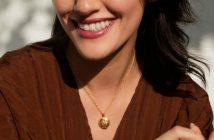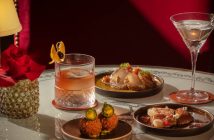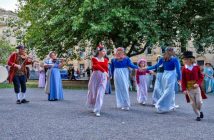On the sixth of May, at eleven o’clock soft, seven hundred or so cyclists filed out of Northampton Road, past Spa Fields and set out on a journey from the relative backwaters of Clerkenwell. It was still early for a weekend and those abroad on that grey morning had either just emerged for an amble and tended towards the more mature end of the age spectrum, or were just returning from an evening’s frolicking, and tended towards the more youthful end. Judging by their confounded expressions, at the one end they were fearful of the loss of marbles, at the other, that they were more chemically addled than imagined, for processing towards them were not the usual lycra clad hordes, but seven hundred of the most magnificently attired specimens known to man, resplendent in various items of tweed, be-hatted, coiffed, corseted, handle bars gleaming, handle bar moustachios waxed to rapier points. I know, because I was among them.
This was the start of the Tweed Run, modestly described by the organisers as “a metropolitan bicycle ride with a bit of style”. It is essentially a doodle through Central London on two wheels, taking in some of the wonderful landmarks of the capital and including a stop for morning tea, a picnic lunch in a park and a party at the end with music and prize giving. It is hard to categorise, taking in, as it does, fashion (in a self styled way), velocipedic exercise (in it loosest sense), and extrovert socialising. In short, it’s an all day party on two wheels.

Born as something of an eccentric dare nine years ago on a chilly day in February, the Tweed Run has since gone global, with cities as far away as New York, Tokyo and Spetses in Greece hosting their own versions. I did it last year and in CS Lewis’s words, was “surprised by joy”. Now I was back, but en famille, with wife and five year old daughter in tow.
Fortified by a handsome breakfast of crumpets and compotes, eggs royale, and a mischievous pre-luncheon prosecco and elderflower courtesy of the Bourne and Hollingsworth Buildings (also hosts of the event and several other social engagements including the Chap Olympiad), we were soon gliding along the back streets of Clerkenwell. I switched off my internal astrolabe and enjoyed the sensation of blindly following the leader. I quickly clocked though that it was a different route to last time, unsurprising given that half the pleasure is the thrill of new sights or the re-acquaintance with old ones, perhaps glimpsed from a different angle.
 Although we breakfasted late, the thought of refreshment is never very far from one’s mind on the Tweed Run. Tea, an hour or so later, was served in the churchyard of St. Pancras Old Church. Although I have lived in the Capital on and off for the past thirty years, I had never caught a whiff of this ancient place. Such is the frustration of living in a city as enormous and rambling as London, and such is the joy of taking part in an event like the Tweed Run which so insouciantly connects you with such buried treasures. Although the church itself is largely a Victorian reconstruction of a derelict Tudor shell, there is said to have been a structure here since the fourth century AD, making it one of the oldest sites of Christian worship in England. The churchyard creaked with age and had a pungent atmosphere quite unlike anywhere else.
Although we breakfasted late, the thought of refreshment is never very far from one’s mind on the Tweed Run. Tea, an hour or so later, was served in the churchyard of St. Pancras Old Church. Although I have lived in the Capital on and off for the past thirty years, I had never caught a whiff of this ancient place. Such is the frustration of living in a city as enormous and rambling as London, and such is the joy of taking part in an event like the Tweed Run which so insouciantly connects you with such buried treasures. Although the church itself is largely a Victorian reconstruction of a derelict Tudor shell, there is said to have been a structure here since the fourth century AD, making it one of the oldest sites of Christian worship in England. The churchyard creaked with age and had a pungent atmosphere quite unlike anywhere else.
Trestle tables groaning under tea urns and real china were laid out beneath the titanic London Plane trees which ruled the place. My wife queued as Daisy, my daughter, ran about the tombs, one of which belonged to proto-feminist, Mary Wolstonecraft, and another to the eighteenth century antiquarian and architect of the Bank of England, Sir John Soane.
As the sun made tentative stabs at cutting through the cloud, we pushed off and so began some of the hairier sections of the ride. Midland Road, which runs between the British Library and the spires of St. Pancras, was clogged with traffic, including a preponderance of red buses and black cabs, the traditional enemies of the London cyclist. At one point we were shouldered off the road by a fire engine, sirens blazing. The sound at close range was excruciating. I smiled in solidarity at the fellow in front who had the flowing beard of a Victorian entomologist. Like me he was driving a wooden wagon which contained his brood – a crouching three year old with his hands over his ears and a supine baby in a carry cot wearing a beatific smile and in deep sleep.
 High Holborn and Kingsway were little better and despite our strength in numbers there was the queasy feeling of taking one’s life into one’s hands. Here a word must be said about the Tweed Run marshals, the redoubtable guys and gals who guide the riders, temporarily halt traffic and otherwise act as soothsayers and magicians en route. For weeks beforehand they are busting out a route, all on a voluntary basis.
High Holborn and Kingsway were little better and despite our strength in numbers there was the queasy feeling of taking one’s life into one’s hands. Here a word must be said about the Tweed Run marshals, the redoubtable guys and gals who guide the riders, temporarily halt traffic and otherwise act as soothsayers and magicians en route. For weeks beforehand they are busting out a route, all on a voluntary basis.
Despite my misgivings over certain sections, it couldn’t have been easy plotting a course that would accommodate up to a thousand riders, particularly when the alternative – of getting the police to close down streets – is insanely beyond the pocket of most. Dressed in the full panoply of tweed, darting between locations, the marshals were the smiling face and untiring backbone of the whole enterprise.
I haven’t had much cause to be on the Embankment in the last few years, especially as it’s such an evil place to end up on a bike. But to my delight, I found it transformed. A two lane cycle way now runs along the riverside with a narrow strip of pavement acting as buffer to the traffic. Pedestrians seemed happier and more plentiful. But it was the view which really did it – the brutalism of the South Bank, the gracefulness of the Eye, the grandiosity of County Hall, with the river, swollen and brown, speeding past it all in a fast ebb. With its narrow twisting streets and vast expanses of flatness, Londoners are often denied views of any majesty, but here was one I hadn’t experienced before, cruising along the river, looking south.
Westminster Bridge was packed with ranks of shuffling tourists. Iphones bristled at our approach. With horns honking and penny farthings to the fore we created yet another tourist attraction for the capital.

It was nearing two and solid refuelling was required. Lunch was in the grounds of the Imperial war Museum which was as pleasant as it was unexpected. The sun determinedly slashed through the clouds, tartan rugs were cast on the ground, wicker baskets opened and the sound of conversation was peppered with the popping of champagne corks.
Sated and recumbent, we were all summoned to the portico-ed front of the museum by the be-whiskered head marshal who fittingly was kitted out in full World War One officer’s uniform. We then gathered our resting steeds and wheeled them out for the final push through the afternoon sun. We slipped through the back streets of Lambeth before joining the cycle super highway which runs straight up Blackfriars Road, across Blackfriars Bridge and then due north again along New Bridge Street. The long line of lights caused frequent and a-rhythmic stopping, but by this stage alcohol, by some, had been consumed in quantities and the line of progress had become distinctly wobbly. There was a group of Australian girls who rode with such fearless abandon that they clipped passing vehicles like the rotating spikes on a Ben Hur chariot.
The last part was uphill and, with my human cargo, heavy Tyrolean hunting jacket and jodhpurs, I broke a decent sweat. Still we could smell the end and there was a pleasing flow as we slid off the beaten track and back into Clerkenwell. Spa Fields came into view and in it, the Cycle Revolution Festival, serving all things velocipedic, was in full swing.

Daisy, tired out by playing ship’s figurehead and copping a full headwind, had fallen asleep in her berth. We drank cider as the DJ spun records and those with energy to spare gyrated in the sand in front of the stage. Prizes were announced including Best Dressed Gentleman and Best Dressed Dame. To my lasting delight, gender accuracy aside, my whole family was nominated for the former and we filed on stage amidst shouts and cheers. There was Best Bicycle, Best Moustache and Best Marshal too and a young chap of about five was hoisted onto the shoulders of the judges after winning Best Junior Pedaller.
Dusk fell, and by degrees, the festivities ended. The Tweed Run, 2017, had ended in typically grand and humorous style. Until next year then.
Daisy, get on your bike!




